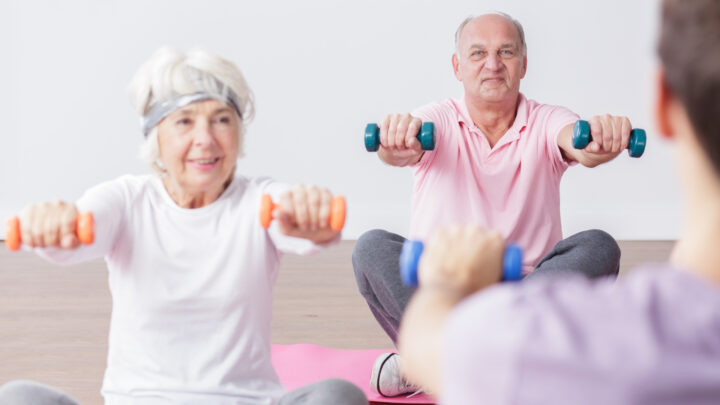In the study which is the largest of its kind, researchers from the University of Queensland examined data of more than eight million people from 85 studies across the world and found that lifelong physical activity reduced the risk of early death by 30 to 40 per cent, while those who became active later in life could still lower their risk by up to 25 per cent.
Lead author of the study, Dr Gregore Mielke, said the results underscored the importance of an active life and showed it is never too late to change your lifestyle.
“These findings are encouraging, especially for when consistent physical activity isn’t always possible due to life constraints,” Dr Mielke said.
“People have often asked me if they’re too old to start exercising – my answer is no, you can start now and gain lasting benefits.”
By contrast, the study saw that those who lived a sedentary lifestyle faced a higher risk of early death.
While researchers concede more research is needed, the results are encouraging – especially for those who find it hard to keep a regular exercise schedule.
For those who struggle to get to the gym, there are easier ways to increase your fitness levels and they don’t require a gym membership. Here are six easy ways to get your blood pumping.
1. Dance during your everyday chores
Put on your favourite tunes, whether it’s The Seekers, a bit of Slim Dusty or some ABBA, and have a boogie in the kitchen. Dancing is not only great for your heart and joints, but it also lifts your spirits. Burn calories and relive your dance hall glory days in one go.
Tip: Make it a daily thing — two songs while the kettle boils, or some tunes in your AirPods while you sweep = instant mood booster. Whistle while you work!
2. Keep a garden and keep it well
Digging, planting, weeding, watering… it all counts as exercise. Gardening gets you bending, stretching, squatting, and lifting. Bonus points if you chat to your plants! Some people believe it helps them grow, and it certainly doesn’t hurt the soul.
Tip: Break it into 10–15 minute chunks throughout the day. Your knees will thank you.
3. Walk and talk during your chats
Instead of sitting down for a cuppa and a chat with a friend, why not take a gentle stroll around the block while you catch up? You’ll hardly notice you’re walking once the conversation starts flowing — and you might even inspire a neighbour or two to join in.
Even if it’s over the phone, you have plenty of opportunity to gab with your friend(s) while you stroll through the park.
Tip: Try having your conversation over a pair of earphones or wireless earbuds so you can free your hands and arms up to hold any personal accessories, weights or just keep them mobile on your walk/jog.
4. Host your own household Olympics
Cleaning doesn’t have to be a chore (well, it kind of is, but it can double as a mini workout). Put on some upbeat music and time yourself doing tasks like vacuuming, window washing or hanging the laundry. This works even better if you’re doing it with another loved one.
Make it fun and a little silly—give yourself medals for speed, style, or flair, which could be a great way to loop the grandkids in.
Tip: Feather dusters make excellent batons. Just saying.
5. Doggy duties with extra zoomies
If you’ve got a dog, you’ve already got a built-in exercise partner. Take them for an extra lap around the park, or toss a ball and join in the chase. Don’t have a dog? Borrow one! Many neighbours would happily let you walk their furry friend — and it’s a great way to meet people, perhaps even make a bit of pocket change as a dog walker.
Tip: Keep treats in your pocket for both of you.
6. Chair exercises
Can’t be bothered standing up? No problem. There are loads of simple stretches and movements you can do from a chair — ankle rolls, knee lifts, arm circles, even a bit of seated salsa if you’re feeling adventurous.
Tip: Try them during ad breaks if you’re watching the telly. One minute of movement = three fewer ads to sit through.
IMPORTANT LEGAL INFO This article is of a general nature and FYI only, because it doesn’t take into account your personal health requirements or existing medical conditions. That means it’s not personalised health advice and shouldn’t be relied upon as if it is. Before making a health-related decision, you should work out if the info is appropriate for your situation and get professional medical advice.

